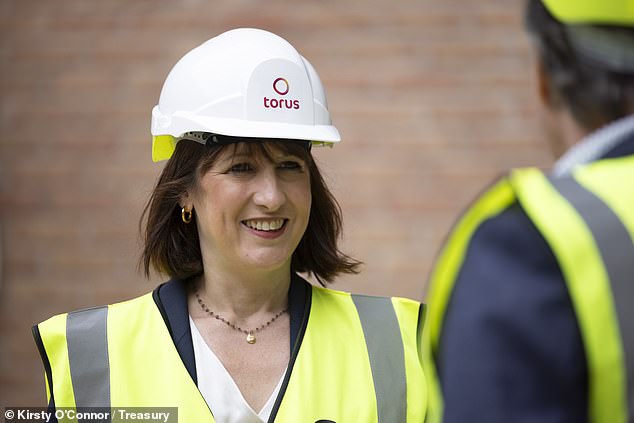Table of Contents
- Hunt tried to get more than 3 million people over 50 back to work
Still on the golf course? Unemployment among the over-50s has not dropped since Jeremy Hunt told them to put down their golf clubs and get back to the office.
The latest figures show that 3,622,000 people aged between 50 and 64 were economically inactive, meaning they were neither working nor looking for work. This figure represents an increase of more than 300,000 people since the start of the pandemic.
This comes despite efforts by the former Chancellor to encourage more 50-somethings to return to work, saying life “doesn’t have to be about going to the golf course”.
Time to relax: Latest figures show that 3,622,000 people aged between 50 and 64 were economically inactive
At the time he made those comments in January last year, the number of people aged 50 to 64 who were economically inactive was 3,641,000, or 27.6 per cent of people in that age range.
Hunt went on to set out plans in his 2023 Budget to tackle the problem, including expanding access to “mid-life MOTs”, designed to help people review their skills and break down barriers to employment.
It also launched “returnship” programs, a type of learning aimed at people over 50 years old.
After that, the inactivity rate among people aged 50 to 64 fell slightly, but then rose again, to 27.4%, meaning that more than a quarter of the age group is neither working nor looking for work. This is up from 25.6% just before the pandemic.
The latest figures covering the three months to June this year illustrate the challenge facing Labour in tackling a problem that Conservative efforts have failed to resolve.
The new chancellor, Rachel Reeves, has said she wants to tackle the problem, saying: “If you can work, you should work.”
Economic inactivity in the UK among 16-64 year olds stands at 9.4 million, close to its highest level in almost 12 years.

Back to work: Rachel Reeves said: “If you can work, you should work”
Of these, a near-record 2.8 million are on long-term sick leave, while others are students (2.6 million) or caring for family members and households (1.7 million).
There are also just over a million people who have already retired and another million who are inactive for ‘other’ reasons, including that they ‘do not need or want a job’.
Reeves could, like Hunt, turn his attention to the latter category when he presents his first Budget on 30 October.
However, Ros Altmann, a former pensions minister, stressed that some economically inactive people had little choice.
“Many of these people are really too ill to work or care for their loved ones,” she said, adding that long NHS waiting lists mean many who could work are unable to do so because of long delays in operations or treatment.
An estimated 228,000 people are temporarily on sick leave. Campaigners say that, in addition to a lack of healthcare support, older workers are being let down by ageism and limited training and development opportunities.
“It is essential to tackle age discrimination, improve social care and put more emphasis on equipping older people with modern skills,” Altmann said.
‘Tackling the issue of NHS backlogs will also help ensure that people aged over 50 who are waiting for treatment have a better chance of returning to work.’
DIY INVESTMENT PLATFORMS

AJ Bell

AJ Bell
Easy investment and ready-to-use portfolios

Hargreaves Lansdown

Hargreaves Lansdown
Free investment ideas and fund trading

interactive investor

interactive investor
Flat rate investing from £4.99 per month

Saxo

Saxo
Get £200 back in trading commissions

Trade 212

Trade 212
Free treatment and no commissions per account
Affiliate links: If you purchase a product This is Money may earn a commission. These offers are chosen by our editorial team as we believe they are worth highlighting. This does not affect our editorial independence.


